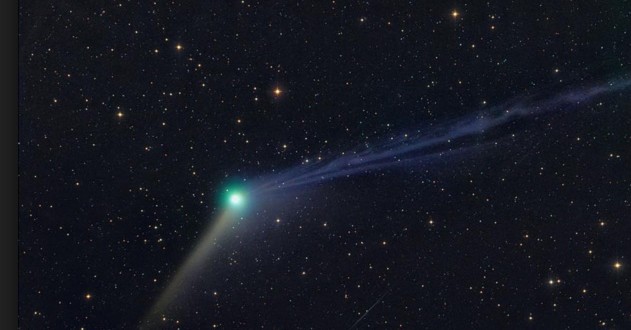If the night sky is clear the next few days it will provide ideal viewing for a comet Catalina.
Comet C/2013 US10 will pass nearest to Earth at a very safe distance this weekend, on January 17. At its closest, the comet will be some 68 million miles (110 million km) from Earth. It isn’t visible to the eye alone, but binoculars should reveal it as a small fuzzy patch of light in the sky after midnight and before dawn. If you have a small telescope, this comet will make a fantastic target.
Although the actual movement of the comet is difficult to perceive in real time because of its distance, you should be able to see that the comet has shifted its position, over perhaps a quarter of an hour, through a telescope. With your ‘scope, take a good look at the comet as well as stars in the vicinity of this celestial visitor. Try making a simple sketch of the comet’s location relative to nearby stars. Then, look again through the telescope eyepiece about 15 or 20 minutes later, and you will clearly see Comet Catalina has changed position!
Due to its distance, the comet appears to move slowly across the sky. However, it is traveling through space at an astounding speed of 132,000 miles per hour (212,433 km/h).
In the coming days, the comet is passing near on the sky’s dome to the stars that form the Big Dipper. Current brightness estimates put Comet Catalina at a magnitude 6.2 to 6.4, just below the level for viewing with the unaided eye, but visible in binoculars, and a fine object for a small telescope. Try looking in the wee hours after midnight, or before sunrise.
Agencies/Canadajournal
 Canada Journal – News of the World Articles and videos to bring you the biggest Canadian news stories from across the country every day
Canada Journal – News of the World Articles and videos to bring you the biggest Canadian news stories from across the country every day



